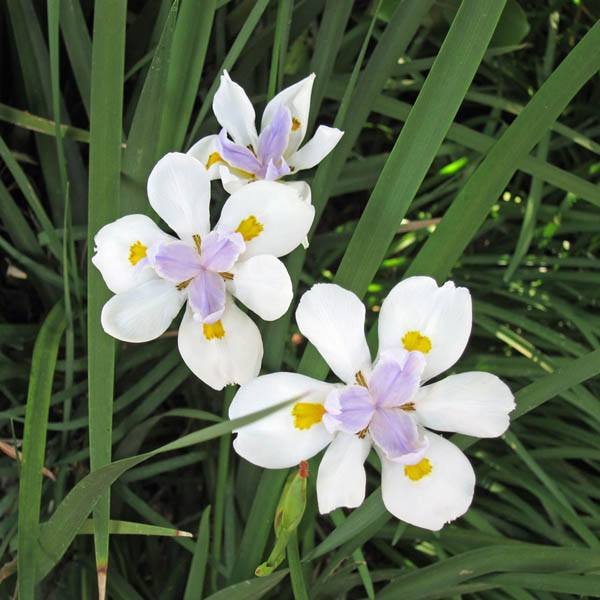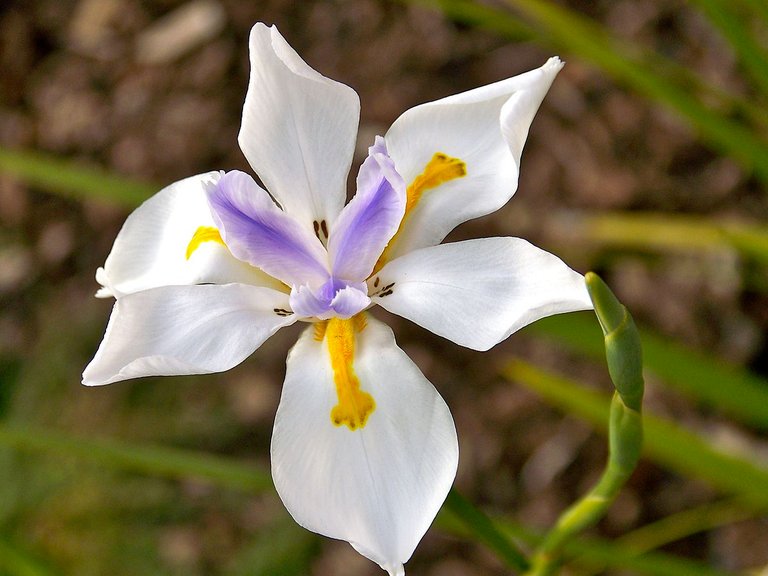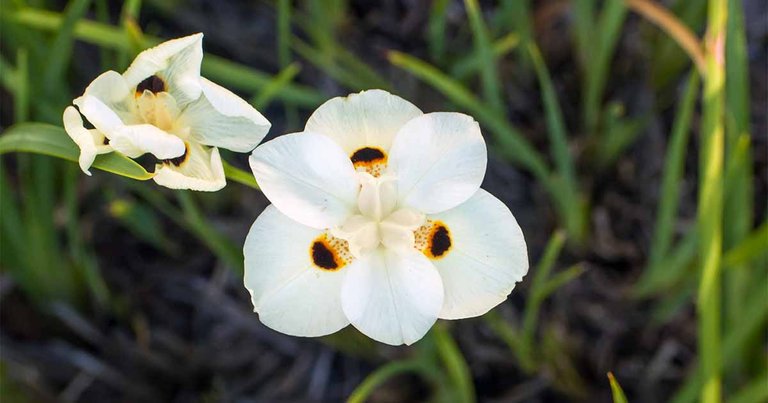Dietes grandiflora

Dietes grandiflora (large wild iris, fairy iris) is a rhizomatous perennial plant with long, rigid, sword-like green leaves belonging to the Iridaceae family. This species is common in horticulture in its native South Africa, where it is often used in public gardens, beautification of commercial premises and along roadsides.
The blooms are white marked with yellow and violet. Dark markings are found at the base of the outer tepals. These are borne in abundance during summer, especially after rain. Flowers are followed by 5 cm long green capsules that contain very dark brown seeds, these are dispersed when the capsule splits open.

Cultivation
Plants prefer dappled shade to full sun where they will flower in profusion, though they will grow in shaded areas (with an accompanying loss of flower production). Under favourable conditions, the clumps multiply rapidly. Dietes grandiflora are drought and frost hardy, making them popular for en masse plantings.
Environmental weed
D. grandiflora is considered an "environmental weed" in parts of Australia, particularly Western Australia, Queensland, and Lord Howe Island.[1]
References
Turner, Sharon (December 2001). "Dietes grandiflora DC". Witwatersrand National Botanical Garden: South African National Biodiversity Institute, South Africa. Retrieved 2008-12-03.
Large wild iris, Dietes grandiflora, Weeds of Australia, Biosecurity Queensland Edition [1]


magoo-2 found a series of multi accounts of a same owner is following your articles to cheat your generous rewards.
magoo-2 found these accounts are suspicious & can be multi accounts of a single owner. Conclusion is based on last 30 days transactions:
@rik432
@ratul8940
@rahul72
@villani
@Wilson
@masud90
@purepinag
@sumonsha
@taylor10
magoo-2
Check our latest multi comment spam update report
Dietes grandiflora
Dietes grandiflora (large wild iris, fairy iris) is a rhizomatous perennial plant with long, rigid, sword-like green leaves belonging to the Iridaceae family. This species is common in horticulture in its native South Africa, where it is often used in public gardens, beautification of commercial premises and along roadsides.
The blooms are white marked with yellow and violet. Dark markings are found at the base of the outer tepals.